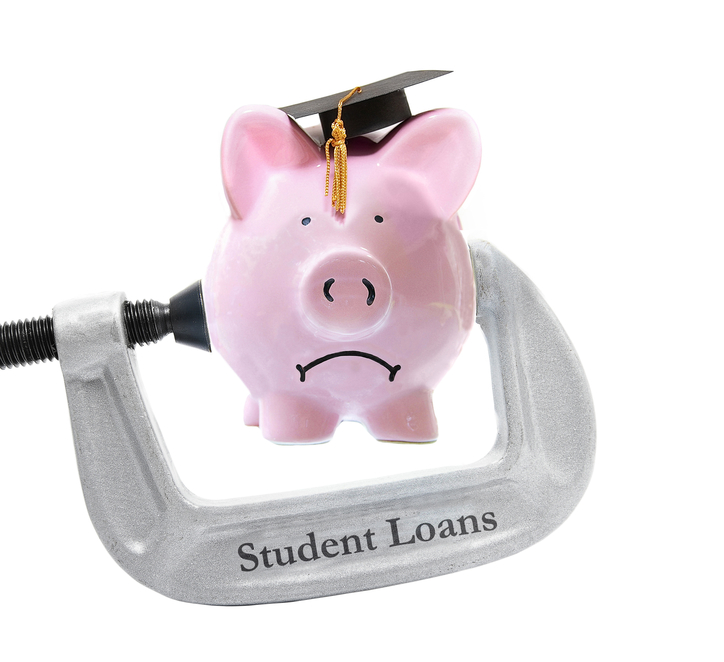The first 4 months of 2021 have been packed with major nationwide events, including significant news surrounding management of the $1.7 trillion in student loans. With all that’s going on, we’ve been following legislation from the new administration, a new Congress, a COVID relief bill, and now the American Rescue Plan.
Employers play a crucial part in the student debt crisis. Here are the top three things you need to know right now to help your employees, members, and clients.
New Annual Tax-Free Employer Contributions
Included in the Coronavirus Aid, Relief, and Economic Security (CARES) Act, this change in policy made employer contributions, up to $5,250 annually, to employees’ student loan payments tax-free through the end of 2020. The December COVID relief bill (that included the $600 relief checks) extended the tax-free treatment of this benefit through the end of 2025.
With the tax-free status, employers do not have to pay payroll taxes on the contribution, and employees do not have to pay income taxes on the benefit. Other deductions such as healthcare and even commuter or gym benefits work the same way, and now, so do student loan payments.
The tax-free status of student loan payments applies to an employee’s broader educational expenses, including tuition, fees, books, and more, with a shared cap of $5,250. If an employer provides $3,000 in tuition assistance and $3,000 in student loan benefits to the same employee, only $5,250 of the $6,000 total benefit would be tax-free.
There’s been a lot of talk lately about the implications this individual change has for forgiveness. Qualifying employers can help cover the monthly expense of student loans, while the employee still accumulates credits toward loan forgiveness.
No-Cost Public Service Loan Forgiveness Payments
President Joe Biden signed a directive on his first day in office to extend the pause on federally held student loan payments and interest until September 30, 2021. The directive continues a set of policies that have been in place since March 2020, including that borrowers who work in the public or nonprofit sectors who are on track to have their loans forgiven through the Public Service Loan Forgiveness (PSLF) program will continue to accrue monthly credits even if they are not required to make payments on their loans.
This policy, which is set to last for a total of 19 months, is really partial student loan forgiveness by another name.
Here’s how we see it: A student loan borrower who started or continued on the PSLF track before the COVID-19 emergency declaration in March 2020 will go on to collect 19 of his or her 120 credits at no cost to him or her by the time the federal forbearance period ends this September.
That means borrowers will be one-sixth of their way toward loan forgiveness without making any payments. This policy not only saves borrowers the money they would have had to pay each month but also allows eligible borrowers to maximize their student loan forgiveness at the end of their 120 payments.
We’re advising anyone, employer or employee, who has been exploring PSLF and his or her eligibility to act now in order to apply for these free credits.
Expanded Tax-Free Loan Forgiveness Options
Lastly is a new tax benefit for those who do receive loan forgiveness. Included in Biden’s $1.9 trillion American Rescue Plan passed last week, alongside the $1,400 direct payments, aid to schools, and other funding, is a provision that’s a big deal for student loan borrowers: income-driven repayment (IDR) loan forgiveness will now be treated as tax-free.
The existing program of IDR plans forgive your balance after 20 to 25 years but were traditionally treated as income, requiring borrowers to pay income taxes on it once receiving that forgiveness. On the contrary, PSLF has always been tax-free, which is part of why it has always received more of the public eye.
This new change now means that regardless of employment (beyond PSLF), federally held loans are eligible for tax-free forgiveness. That’s a big benefit for low- and middle-income borrowers who need long-term relief.
While this tax-free treatment of all student debt forgiveness is currently only enacted through 2025, based on how other similar programs such as R&D tax credits have been treated in the past, this is likely the first step to more permanent legislation.
No matter your industry, benefits provider, or geography, these student loan changes are exciting and will unlock billions in savings and forgiveness for borrowers over the coming decade. For those of us working in the student loan industry day in and day out, we need your help in passing along the good news of these changes and paying it forward to help your employees with their student loan journey.
Tobin Van Ostern is cofounder of Savi, an online service that walks student loan borrowers through the best repayment and forgiveness options. Savi is a student loan benefit provided by leading employers, financial institutions, and membership groups. Previously, Van Ostern has led work at the 2008 Obama campaign, the Center for American Progress, and YI Advisors, with a plethora of national news features. Drop a line and learn more: tobin@bysavi.com. *See the company site here.

